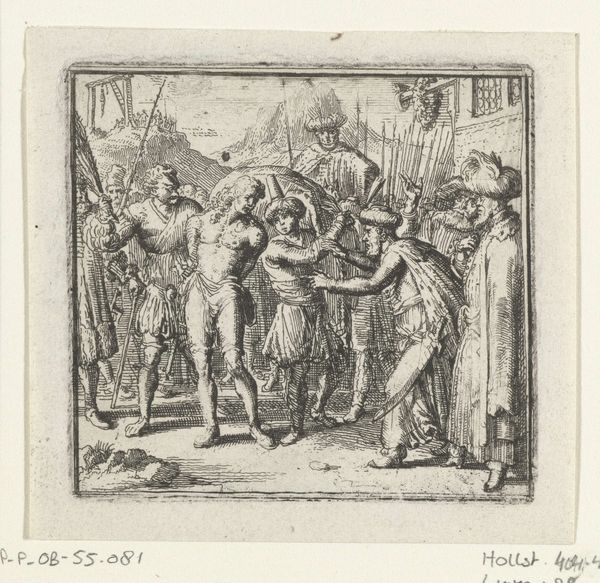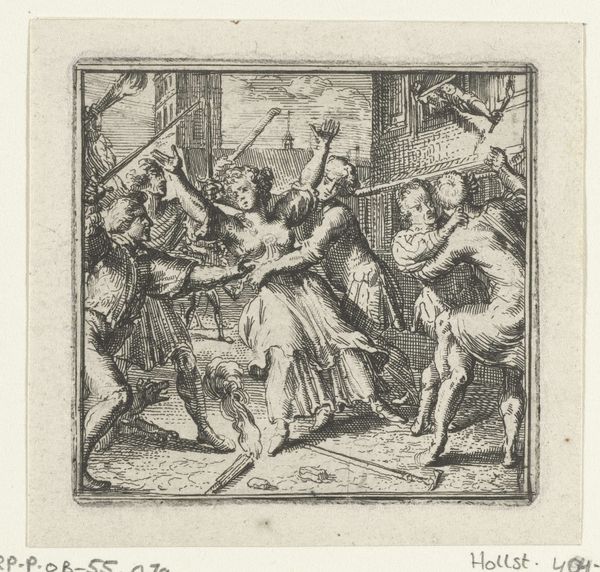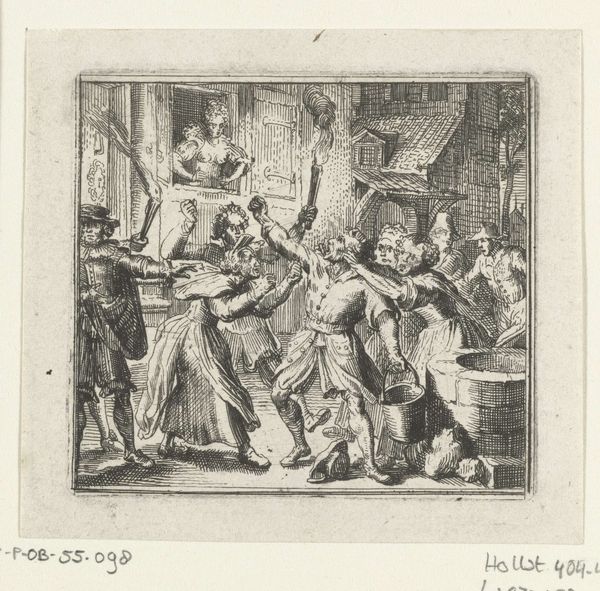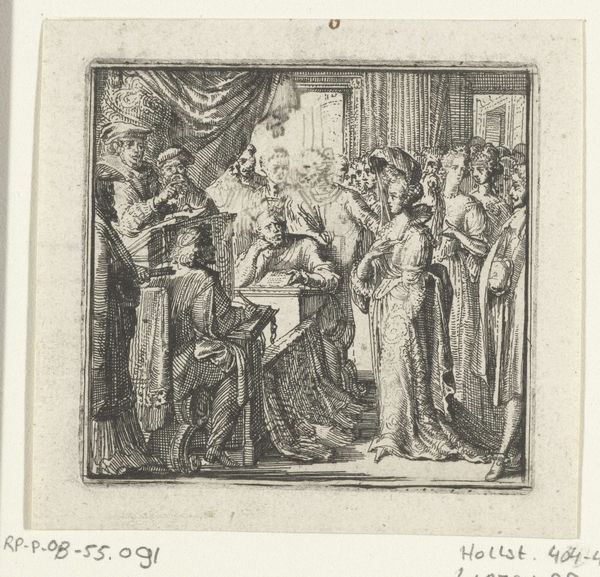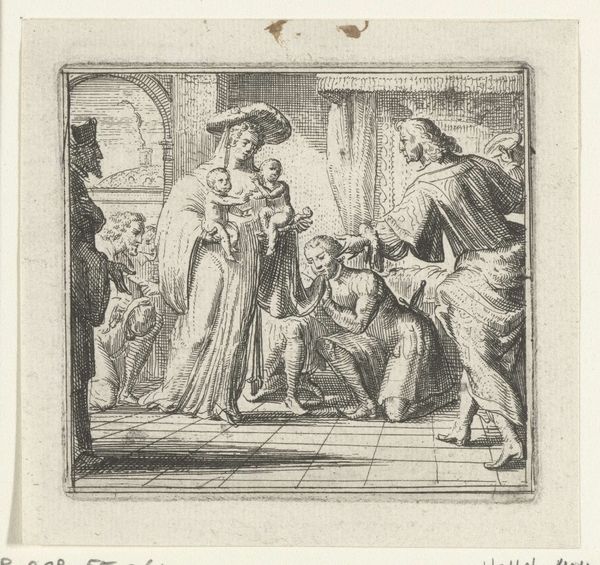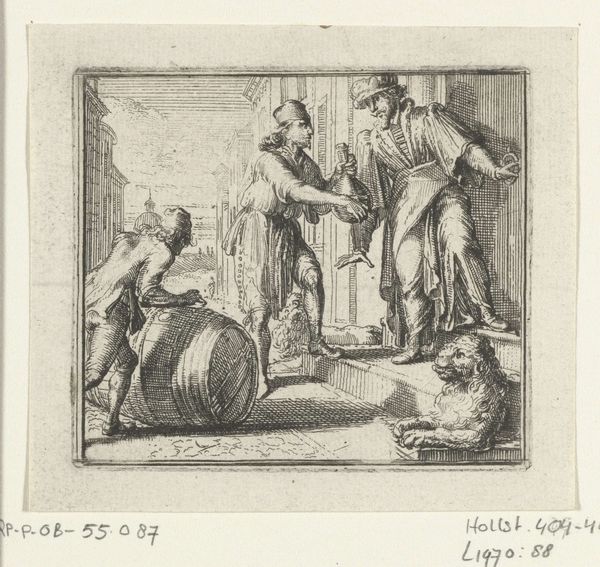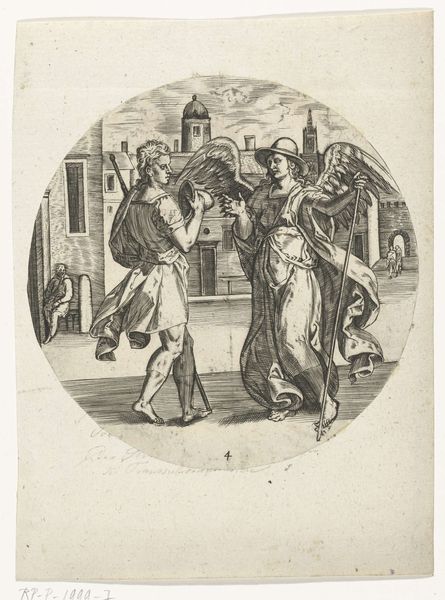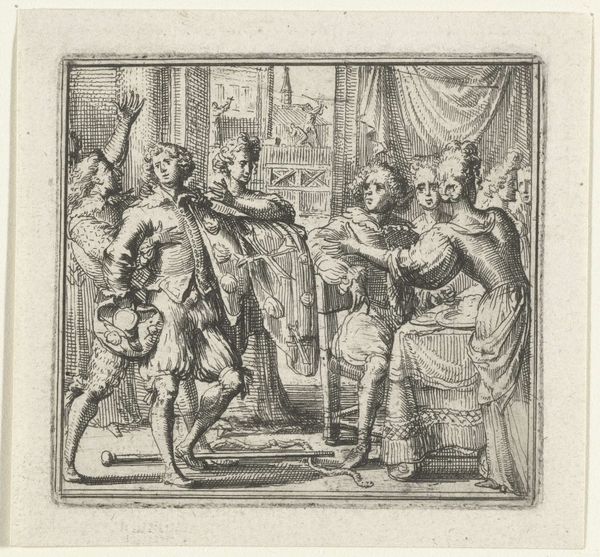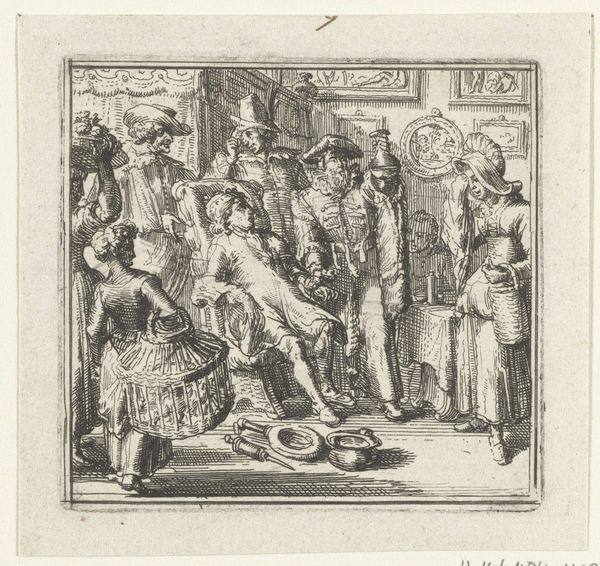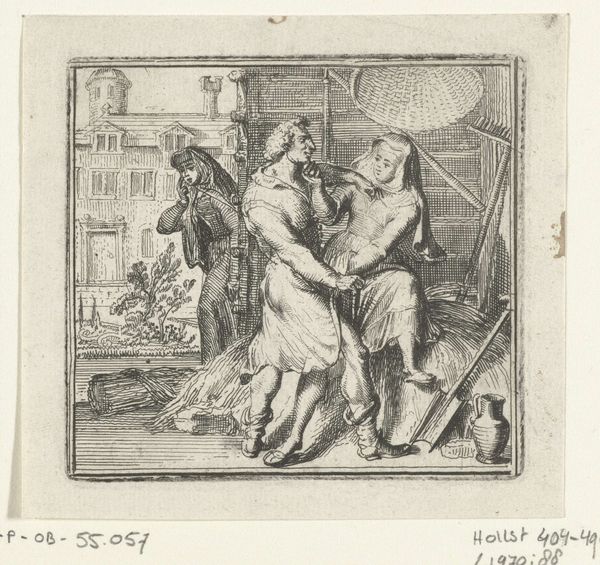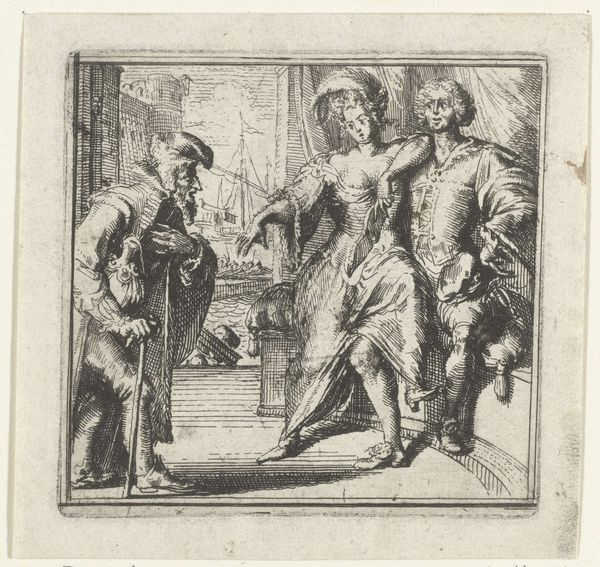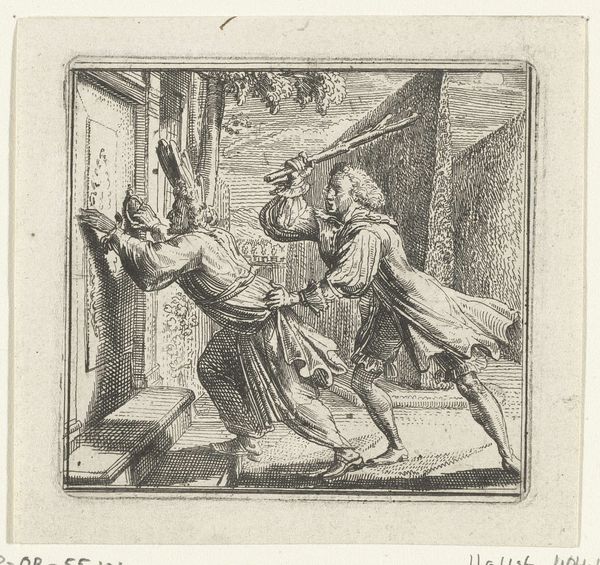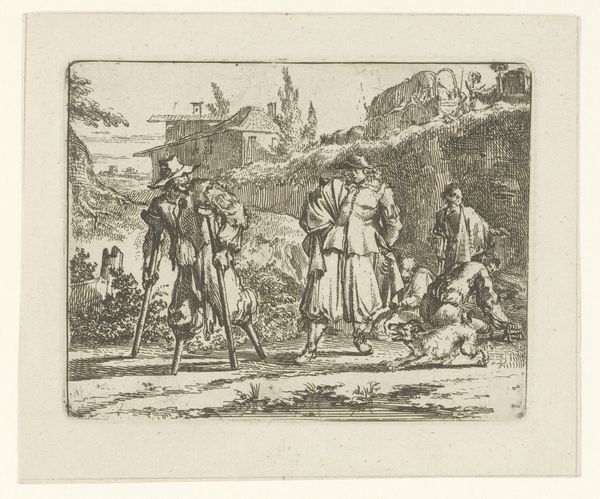
print, engraving
#
narrative-art
#
baroque
# print
#
old engraving style
#
genre-painting
#
engraving
Dimensions: height 72 mm, width 79 mm
Copyright: Rijks Museum: Open Domain
This illustration for Boccaccio’s Decameron was made by Romeyn de Hooghe using etching, a printmaking technique that democratized image production in the 17th century. The process begins with a metal plate coated in wax. The artist scratches an image into the wax, exposing the metal, which is then submerged in acid. The acid bites into the exposed lines, creating grooves. Ink is then applied to the plate, filling these grooves. Finally, the plate is pressed onto paper, transferring the image. Here, the fine, closely-spaced lines create a detailed scene, complete with a rather unfortunate donkey. Etching allowed for the relatively quick and cheap reproduction of images, making art accessible to a wider audience. De Hooghe was a prolific printmaker, churning out illustrations, political satires, and topographical views. His skill highlights the interplay between artistic vision and the burgeoning print industry of the time, a testament to the era’s changing landscape of art and labor.
Comments
No comments
Be the first to comment and join the conversation on the ultimate creative platform.
